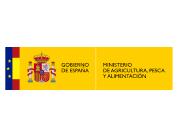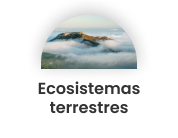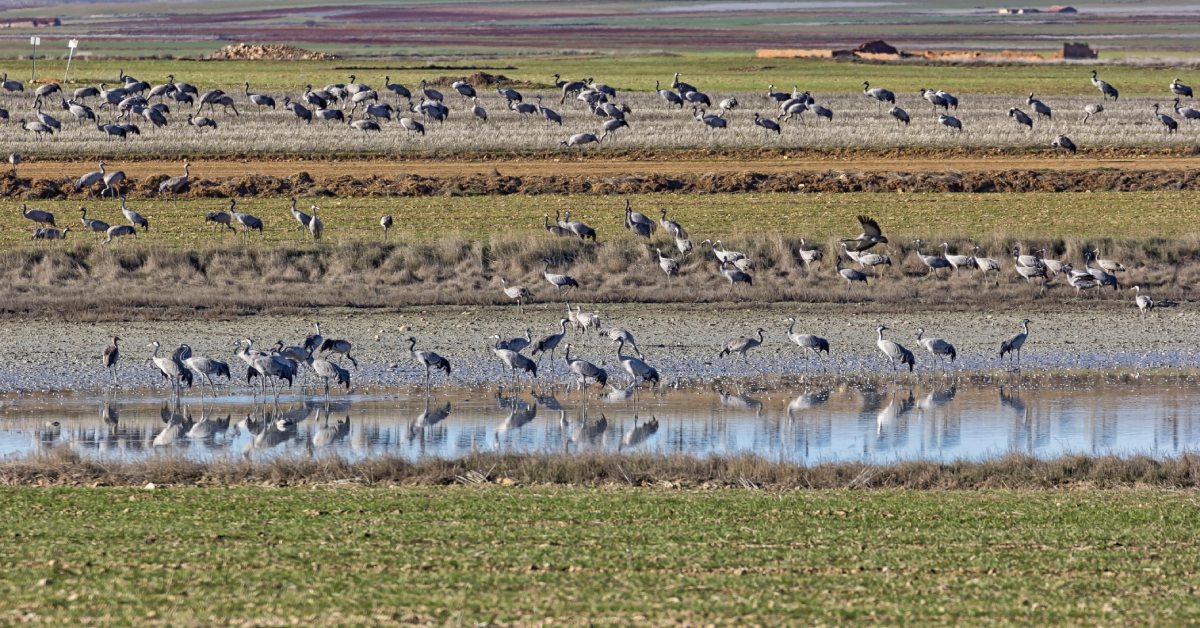
Precision monitoring of water fluctuations of RAMSAR intermittent saline wetlands in the Middle Ebro Basin using spatial remote sensing.
MITECO
Line of action:
Terrestrial ecosystemsStatus:
FinalizadoExecution date:
2020End date:
2022Total budget:
159.320,07 €Amount of aid from the Biodiversity Foundation:
73.200,00 €More than 45 wetlands of international importance in the middle Ebro basin (such as the Gallocanta Lagoon, Saladas de Bujaraloz-Sástago and Saladas de Chiprana) vary substantially in their extent over time, mainly due to climatic factors, but also to anthropogenic factors.
This variability of the water surface causes the existence of highly contrasted singular environments and unique ecological values. Accurate knowledge of the rate of flooding and desiccation, as well as the zonation of flood persistence, flood depth and its relationship to immediate climatic conditions is key to recognizing critical habitats and managing them correctly.
The use of hundreds of available images from Sentinel 2 and Landsat satellites acquired between 1984 and 2021 and of a tool capable of locating the shore with high precision has made it possible to create a cartographic and documentary base essential for understanding the hydrological dynamics of these lagoons and for their management.
The general objective of the project is to record and characterize the temporal variability of the water surface of the RAMSAR wetlands Laguna de Gallocanta, Saladas de Bujaraloz-Sástago and Saladas de Chiprana, its relationship with climatic conditions and the effects on the configuration of different habitats protected by European Directives.
It has the following specific goals:
- Obtain available information on the characteristics and dynamics of the Gallocanta Lagoon, Saladas de Bujaraloz-Sástago and Saladas de Chiprana and key auxiliary information for the development of the work.
- Extraction of seasonal and multiannual changes in the water sheets obtained from the accurate deduction of the coastline in the historical series of Sentinel 2 and Landsat 5, 7 and 8 satellite images in the Gallocanta Lagoon, Saladas de Bujaraloz-Sástago and Saladas de Chiprana.
- Extraction of a detailed Digital Elevation Model (DEM) of the existing gaps in the three study areas and detection of short-term morphological changes.
- Analysis of water surface changes over time and characterization of subenvironments within the lagoon spaces.
- Quantification of the variation of water volume in the lagoons and evaluation of its relationship with climatic conditions in the studied lagoons and their watersheds.
- Characterization of surface hydrologic control on lagoon dynamics.
- Bibliographic review of scientific articles, technical studies and basic data.
- Evaluation and extraction of seasonal and multiannual changes in the lagoons under study.
- Extraction of a Digital Elevation Model (DEM) and detection of short-term morphological changes.
- Detection of changes, mapping and characterization of key subenvironments in lagoon areas.
- Quantification of the variation of water volume in the lagoons and evaluation of its relationship with climatic conditions in the studied lagoons and their watersheds.
- Characterization of surface hydrologic control on lagoon dynamics.
- Dissemination and communication of the project.
- A cartographic and documentary base has been obtained that records the evolution of the Gallocanta lagoon, the lagoon complex of the Saladas de Sástago-Bujaraloz (in Monegros) and the Salada de Chiprana from 1984 to 2022.
- Using as base material all cloud-free images from Sentinel 2 and Landsat satellites, the positions of the shores of each of the existing lagoons have been deduced. More than 2,150 images have been analysed in Gallocanta and about 1,150 in the other two areas analysed, with the shore being extracted on 1105 dates in Gallocanta, 687 in the Saladas de Sástago-Bujaraloz and 749 in Chiprana.
- The position of the shore has been extracted with sub-pixel precision – with an error of less than 5 meters – which has allowed the surface variations to be quantified in great detail. Using this information and the Digital Elevation Models , the changes in the volume of water stored in each of the monitored lagoons have been estimated.
- All this has made it possible to recognize the evolutionary dynamics of these environments, showing the strong seasonality -especially in the Saladas de Sástago-Bujaraloz-, but also the influence of the multiannual wet-dry cycles.


Precision monitoring of water fluctuations of RAMSAR intermittent saline wetlands in the Middle Ebro Basin using spatial remote sensing.









 back to search
back to search 